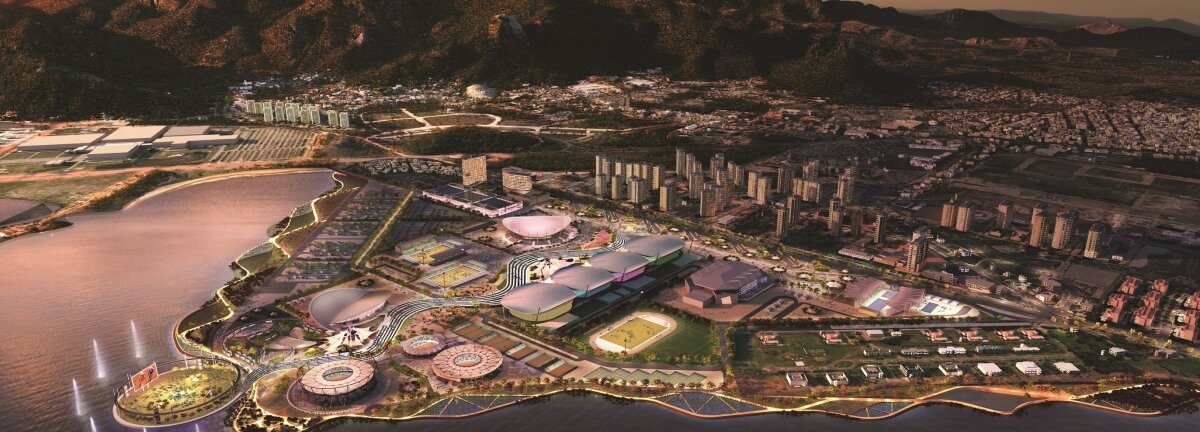Rio 2016: thoughts on the masterplan

While London is still enjoying the afterglow of last year’s great party, Brazil is getting prepared for the next mega-event, Rio 2016. Having provided Design Review for the London 2012 Olympic site, I'm very curious about what's in store for Rio.
With only three years to go, and the enormous challenge of turning an odd left-over space into an amazing sports venue, I am reminded of what London had to overcome before 2012. So I am curious to find out more about the Brazilian approach to transforming a part of Rio de Janeiro to accommodate the Games. Befittingly, the NLA hosted a breakfast talk last Friday to tackle that very question.
At the event, Jason Prior from Aecom, a firm that made substantial contributions to London, presented the masterplan for the 2016 Olympic Park, including some of the key sports venues. Jason described the challenges of finding an appropriate site within the city boundaries as well as dealing with planning, public transport, environmental issues, procurement, and delivery. The proposed site for the Olympic Park is the former Formula 1 Brazilian Grand Prix race course in Barra da Tijuca, located on a peninsula in the lagoon southwest of the city.
Given the difficult terrain of Rio de Janeiro, high mountains and national parks, the lagoons, congested roads, the reliance on bus systems and one single entrance point into the site, accessibility seems to be the major challenge for the Olympic Park. The Olympic venues are spread across the whole city and the Games will require a convincing mobility strategy to ensure that travelling between the different events is easy.
I remember from the London Games that the Olympic Stadium was the pulsating heart of the Olympic Park, both physically and in terms of being the central hub where 80,000 people gathered to watch the opening ceremony and witnessed dramatic finals, moments of triumph and suspense. In Rio, the Maracanã Stadium – where, as many football matches have shown, the crowds can be very passionate – is far away from Barra da Tijuca, and it will be interesting to see whether the absence of the stadium will have an impact on the atmosphere in the Olympic Park.
The long-term quality and purpose of the Olympic structures remains to be tested too. Currently, the masterplan for the Olympic Park appears rather isolated and cut off from adjacent neighbourhoods by a huge multi-lane avenue. London benefited from Cabe’s design advice to ensure that each structure and building within the Olympic Park as well as the legacy aspects were well-considered. It would have been useful to have a similar, independent process in place in Rio.
The other big question about the Rio Games is the water quality of the lagoon surrounding the Olympic site. Jason Prior emphasised the waterfront location but also explained that the lagoon is severely polluted and requires intensive cleaning up and mitigation work to ensure that the waste water from the favelas on the mountains above the Olympic Park is treated before it flows into the lagoon. From the presentation, it wasn’t clear how this problem can be addressed.
Next year, the Football World Cup is the first opportunity for Rio de Janeiro to show the world how to organise a great party. In terms of the Olympiad, there's still a lot of time left to resolve the outstanding issues – and if need be, the whole city could be declared Olympic Park and celebrations could go on everywhere.
While 2016 seems somewhat distant, it already makes sense to look at the 2020 Olympics. The candidate cities for the 2020, Istanbul, Tokyo, and Madrid, are already getting nervous. The decision will be made on 07 September and we’ll keep a close eye on masterplans and sport venue designs!
Subscribe to our newsletter
Want to keep up with the latest from the Design Council?
